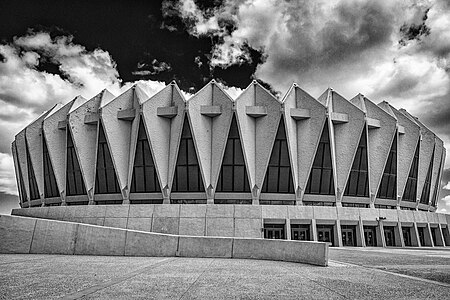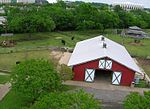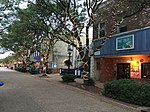Hampton Coliseum

Hampton Coliseum is a multi-purpose arena in Hampton, Virginia. Construction began on May 24, 1968. The venue held its first event on December 1, 1969, with the nearby College of William & Mary playing North Carolina State University in a college men's basketball game. On January 31, 1970, the Coliseum formally opened as the first large multi-purpose arena in the Hampton Roads region and the state of Virginia (opening a year before the Norfolk Scope in Norfolk.) With a final estimated cost between $8.5 million to $9 million, the arena was designed by Odell Associates and constructed by McDevitt and Street, of Charlotte, North Carolina. The venue capacity is configurable from 9,800 to 13,800 seats.
Excerpt from the Wikipedia article Hampton Coliseum (License: CC BY-SA 3.0, Authors, Images).Hampton Coliseum
Coliseum Drive, Hampton West Hampton
Geographical coordinates (GPS) Address Phone number Website External links Nearby Places Show on map
Geographical coordinates (GPS)
| Latitude | Longitude |
|---|---|
| N 37.034725 ° | E -76.381338888889 ° |
Address
Hampton Coliseum
Coliseum Drive 1000
23666 Hampton, West Hampton
Virginia, United States
Open on Google Maps




